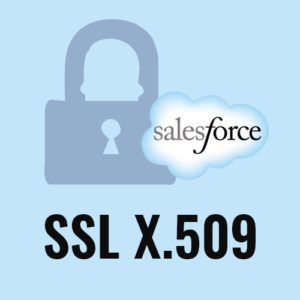Engage Members with Confidence, Not Guesswork
Member-based organizations and nonprofits rely on accurate data to confidently engage members, report, and operate efficiently. Yet CRMs often become cluttered with duplicate contacts, outdated records, and inconsistent information — slowing teams down and leading to missed opportunities.
fusionSpan is proud to partner with Traction Complete to address this challenge head-on. By leveraging Complete Clean, we help organizations automate data cleansing, eliminate duplicates, and maintain a reliable, always-ready database. As a 100% native solution, Complete Clean keeps data secure, actionable, and under your control.
Confronting the Deduplication Dilemma
 Many organizations struggle with maintaining clean, structured data — especially in legacy systems and fast-growing environments. Duplicate accounts, inconsistent records, and outdated contact information drain resources and reduce engagement. In fact, industry studies suggest that up to 30% of CRM data can be redundant or inaccurate, hindering your operational efficiency and decision-making (Source: Experian Data Quality).
Many organizations struggle with maintaining clean, structured data — especially in legacy systems and fast-growing environments. Duplicate accounts, inconsistent records, and outdated contact information drain resources and reduce engagement. In fact, industry studies suggest that up to 30% of CRM data can be redundant or inaccurate, hindering your operational efficiency and decision-making (Source: Experian Data Quality).
Unlocking Organizational Efficiency
Complete Clean offers a robust solution to overcome these obstacles by:
- Eliminating Duplicates: Automates identification and merging of duplicate records to keep your database organized and unified.
- Improving Data Quality: Ensuring that every data point is up-to-date and consistent, thereby improving the overall reliability of your CRM system.
- Saving Time and Resources: It frees staff from manual data cleanup chores, allowing them to focus on member engagement and strategic initiatives.
Our Success Story
 At FusionSpan, we didn’t just rely on promises — our own experience with Traction Complete spoke volumes.
At FusionSpan, we didn’t just rely on promises — our own experience with Traction Complete spoke volumes.
After deploying Complete Clean to dedupe our accounts and contacts, we saw a 12% improvement in data accuracy and an 8% reduction in duplicate contact and account records. These improvements streamlined our workflows, improved reporting, and reinforced our commitment to maintaining clean, dependable data across our systems.
Your Next Step Towards Data Excellence
If your team spends more time managing data instead of using it, it’s time to rethink your approach. Discover how FusionSpan and Complete Clean can help elevate your data quality, drive efficiency, and free your team to focus on what matters most.
Contact us today to schedule a demo and take the first step toward cleaner, more dependable data.

 Managing taxes is rarely something member-based organizations look forward to. However, for 501(c)(3) organizations, ensuring tax compliance is critical to preserving their nonprofit status and essential to maintaining member trust. The challenges are multifaceted, from navigating complex tax exemptions to managing sales tax for merchandise.
Managing taxes is rarely something member-based organizations look forward to. However, for 501(c)(3) organizations, ensuring tax compliance is critical to preserving their nonprofit status and essential to maintaining member trust. The challenges are multifaceted, from navigating complex tax exemptions to managing sales tax for merchandise. While 501(c)(3) organizations enjoy significant tax benefits, their tax responsibilities can still be complex and burdensome:
While 501(c)(3) organizations enjoy significant tax benefits, their tax responsibilities can still be complex and burdensome: Avalara offers a comprehensive suite of tax automation solutions designed to simplify even the most complex scenarios. With Avalara, associations can:
Avalara offers a comprehensive suite of tax automation solutions designed to simplify even the most complex scenarios. With Avalara, associations can: Let’s explore how Avalara can address typical scenarios faced by associations:
Let’s explore how Avalara can address typical scenarios faced by associations:
 Every organization’s donor stewardship approach will look slightly different depending on its audience and needs. However, the main advantages of a well-executed stewardship strategy are the same across the board:
Every organization’s donor stewardship approach will look slightly different depending on its audience and needs. However, the main advantages of a well-executed stewardship strategy are the same across the board: To develop an actionable stewardship plan for your nonprofit, let’s walk through three useful strategies for any size organization.
To develop an actionable stewardship plan for your nonprofit, let’s walk through three useful strategies for any size organization.
 Although it’s not the most exciting part of the event management process, logistics are the foundation of your event, and planning them far in advance ensures everything runs smoothly. Leave your team plenty of time to determine the following event logistics:
Although it’s not the most exciting part of the event management process, logistics are the foundation of your event, and planning them far in advance ensures everything runs smoothly. Leave your team plenty of time to determine the following event logistics: Once your event wraps up, and on an ongoing basis, reflect on your event management process. Optimize future events by noting your successes and identifying areas for improvement. Evaluate your event management approach by:
Once your event wraps up, and on an ongoing basis, reflect on your event management process. Optimize future events by noting your successes and identifying areas for improvement. Evaluate your event management approach by:




 In less than two weeks (May 25, 2018), the most significant change in data privacy in 20 years and protection regulation goes into full effect. The
In less than two weeks (May 25, 2018), the most significant change in data privacy in 20 years and protection regulation goes into full effect. The  The process of creating and configuring a new certificate is fairly straightforward and can be done in 2 fairly quick steps:
The process of creating and configuring a new certificate is fairly straightforward and can be done in 2 fairly quick steps: